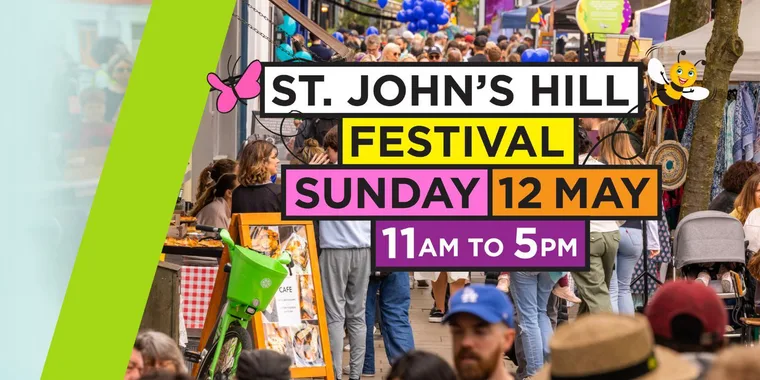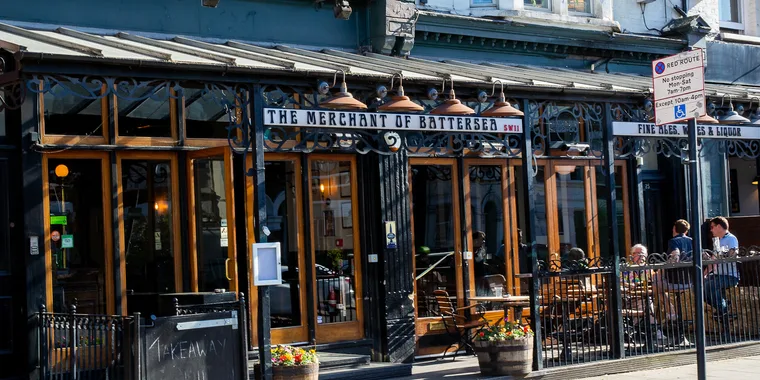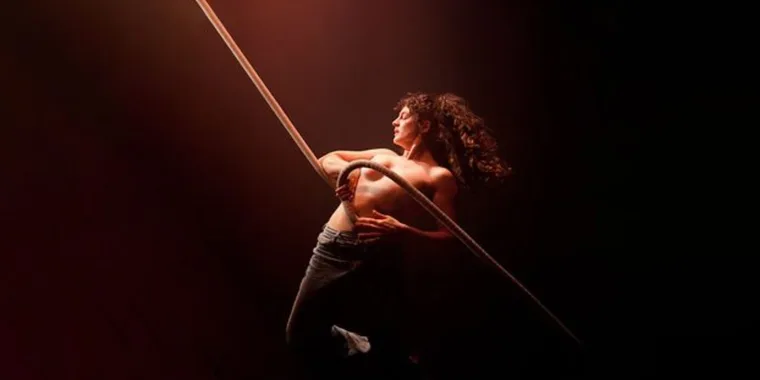You may already know Clapham Junction as one of South West London’s most popular shopping and entertainment destinations, but do you know just how much rich history and heritage there is on your doorstep?
THE RAILWAYS
Clapham Junction is a creation of the railways. Until the mid-19th century, Battersea consisted of a small, somewhat isolated settlement around St Mary’s church on the River Thames. Most of the rest of the parish of Battersea – extending east to Nine Elms, west to Battersea Reach, and south to Nightingale Lane and beyond Bellevue Road- was given over to agriculture.

Clapham Junction Station circa 1875
The London and South Western Railway (LSWR) arrived in 1838, running from its initial terminus at Nine Elms to Southampton. But there was no station near the junction of Falcon Road and St John’s Hill. The nearest one was south of Battersea Rise, near what is now Emanuel School. All was changed by the ambitions of the London, Brighton and South Coast Railway (LBSCR) to get access to a terminus near London’s West End. Its preferred route was across Clapham Common. But they were thwarted by the conservators and other defenders of that common, and were forced eventually to use a more roundabout route across the less-well-defended Wandsworth Common.
So by 1856, the LBSCR and LSWR (which had already built a branch line to Richmond and Windsor, diverging from the main line just west of the Falcon Road bridge) found themselves running alongside each other immediately to the south-west of what is now Clapham Junction. The creation of yet another line, running north to cross the Thames into Chelsea and onwards to Willesden (now used mainly by London Overground) finally spurred the three companies to come together to build a station, which opened in 1863.
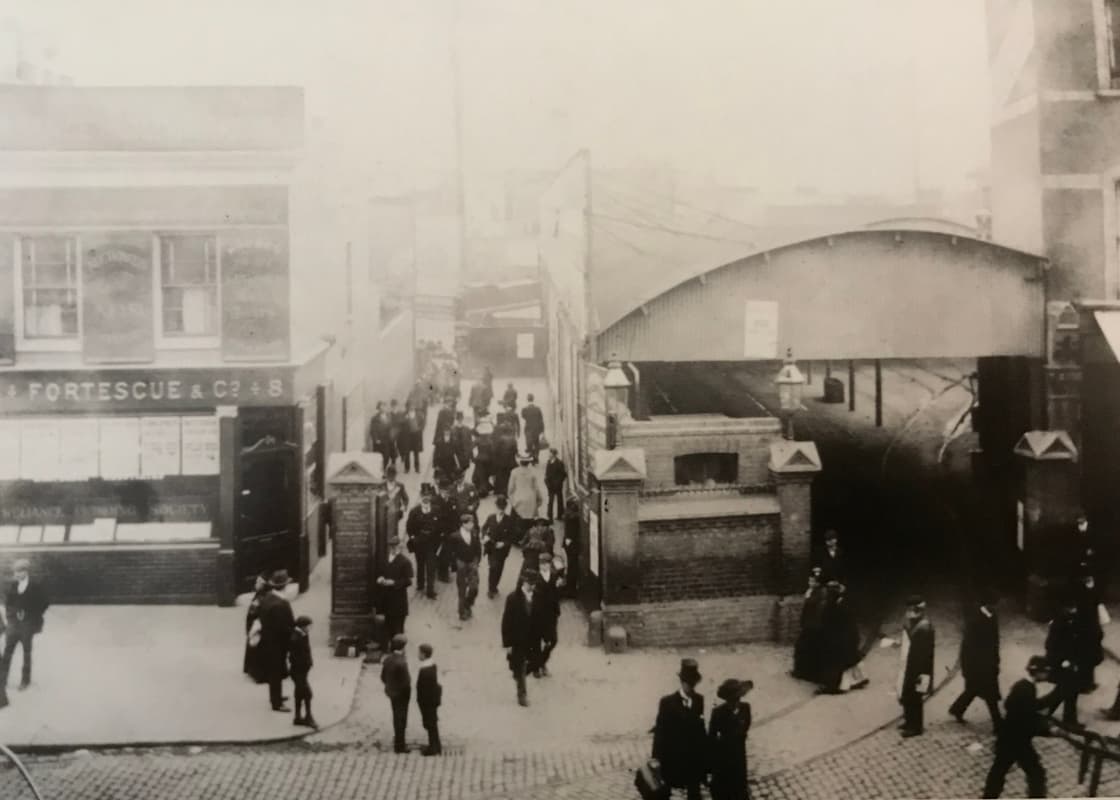
Station entrance circa 1910
The first of two reconstructions of Clapham Junction station took place in 1873-76, followed by another in 1904-10 which created the station largely as it is today. The only major change since then has been the building of the shops and offices on formerly-derelict land, to make a new entrance on St John’s Hill. The notorious subway extends from this entrance under all the platforms and tracks, to emerge at the separate entrance on Grant Road.
So with ever-more branches, sidings, goods yards, locomotive sheds and workshops, the railways created the mass of cuttings and bridges, embankments and viaducts that characterise what was historically dubbed the Battersea Tangle. They also created 160 years of confusion by naming the station Clapham Junction, even though it’s located in the middle of Battersea.

Today, more than 2,000 trains pass through Clapham Junction each day, more than any other station in Europe. Some 29 million passengers pass through the ticket barriers each year, and a further 28 million change trains there, making it by far the busiest interchange station in the UK. Numbers have increased relentlessly over the past twenty years, and there are plans to redevelop the station from the ground up. Whether and when those plans might come to fruition is as yet, however, far from clear.
HOUSING
When Clapham Junction station opened in 1863, the surrounding area still had very little housing. There were villas on the higher ground around Clapham Common and Wandsworth Common, and on Lavender Hill; and some terraced houses for the working classes had begun to appear south of the old Thames-side village of Battersea.
The opening of the station brought a building boom, with terraces being built either side of Falcon Road, on York Road, Battersea Park Road, and Plough Road. In 1865-66, the covering over of the Falcon Brook along Northcote Road and St John’s Road and of the Heathwall River that ran along the northern foot of Lavender Hill, along with later pumping stations, brought improvements in the drainage of the swampy ground in north Battersea. This opened up much more land for housing, including more than a thousand workers’ cottages on the Shaftesbury Estate, built between 1872 and 1877.
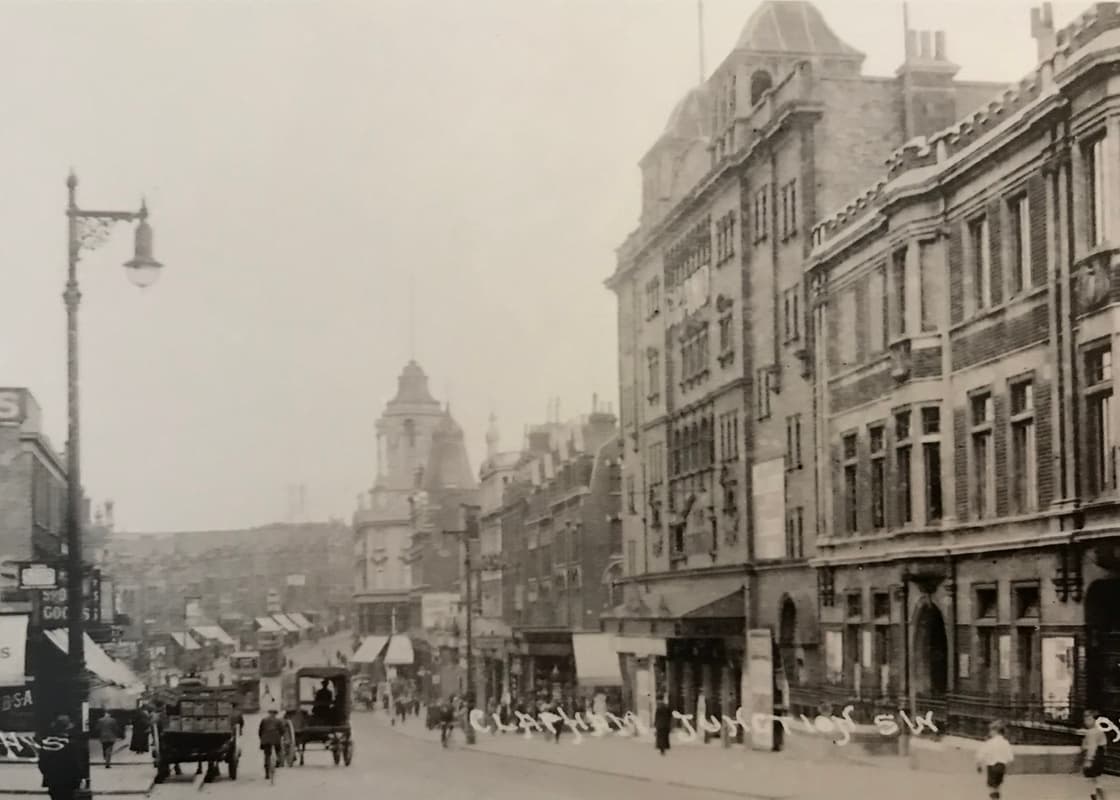
St John's Hill and Lavender Hill circa 1925
By the 1880s, Battersea north of the railway lines was largely built up, and focus shifted to the south of Lavender Hill and St John’s Hill. By 1900, few large villas remained around Clapham and Wandsworth Commons, and the area between them had been covered with mostly terraced housing. South Battersea had become a lower middle-class suburb (though what appeared to be houses for one family were often divided into two or more flats behind a single front door).
So the distinction between housing north and south of Lavender Hill was well-established 120 years ago: clerks working in the City and West End predominated to the south, worker employed in the riverfront industries, the gasworks and the railways to the north.
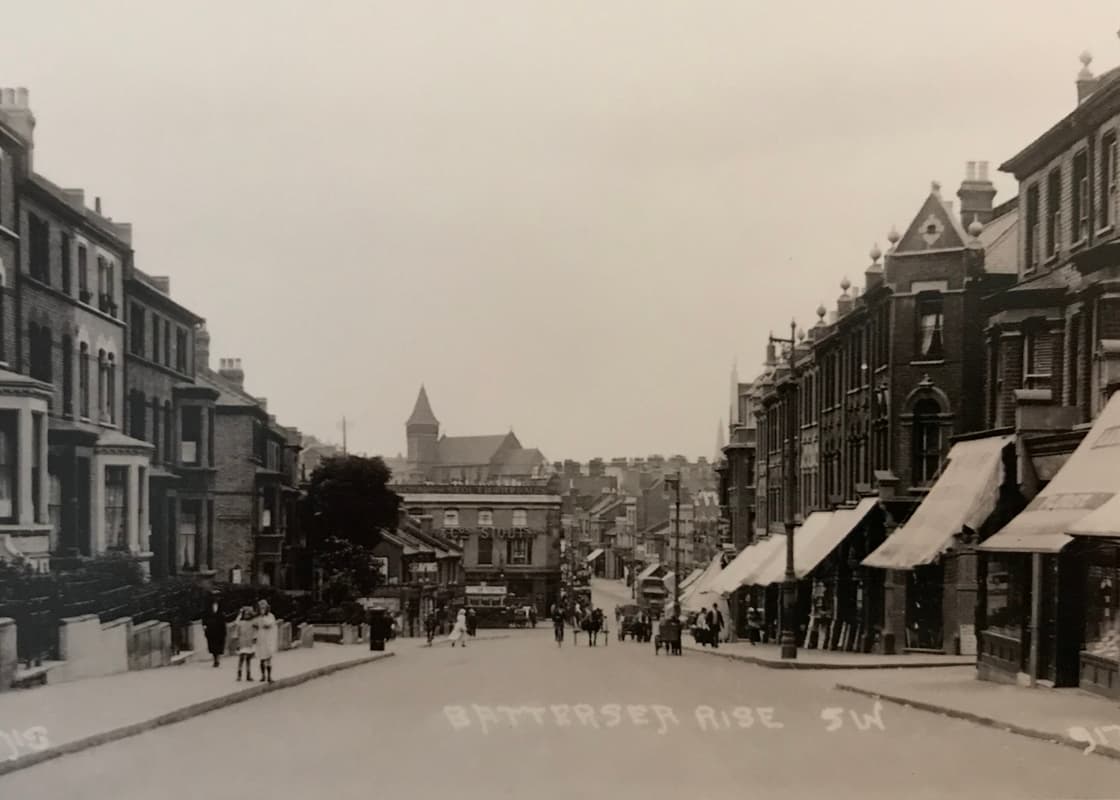
Battersea Rise circa 1925
Until the 1960s, the shortage of available land around Clapham Junction meant that very little public housing was built, with some exceptions such as the small Town Hall Estate built in 1905 and some infilling of bombsites in the 1950s. But from 1960 this changed dramatically, as Battersea Council developed a slum clearance strategy, with the aim of eliminating all the slums between Clapham Junction and the Thames. The Winstanley, Doddington, Rollo, Kambala and other estates followed in quick succession, transforming the area north of the railway lines.
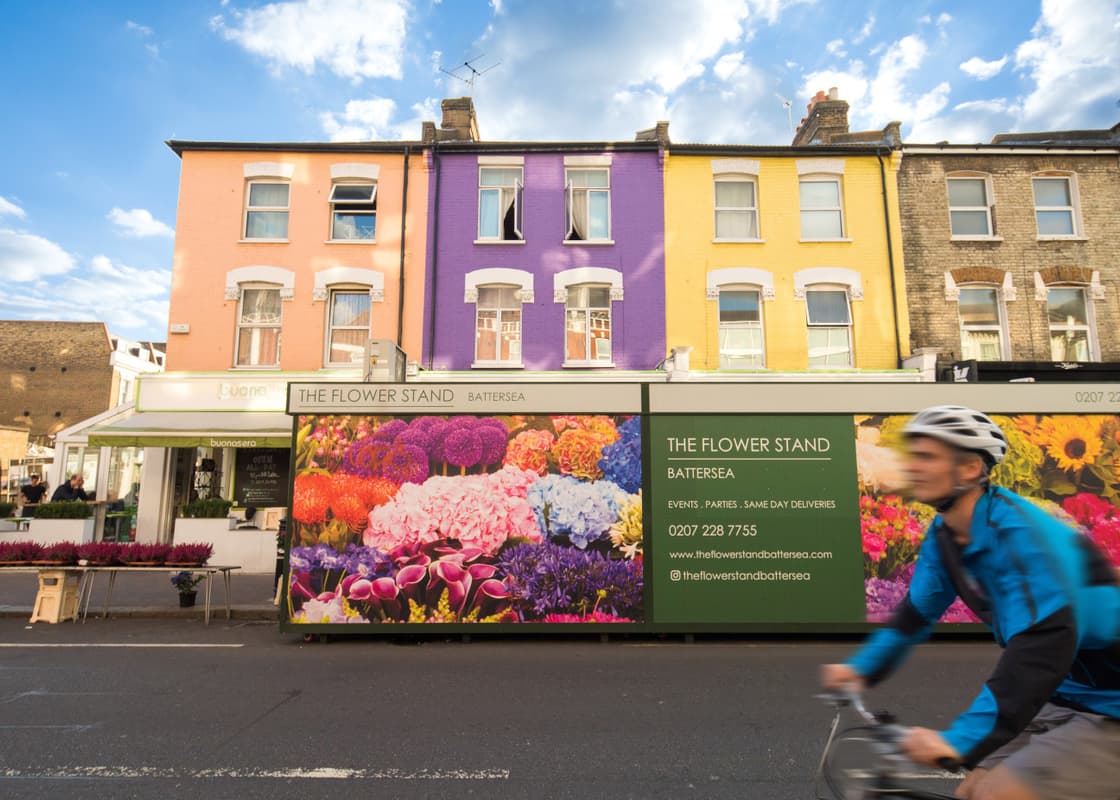
Other changes soon followed, as pockets of regeneration and gentrification began to take hold from the mid-1970s. This started along the river (soon to be dubbed South Chelsea), but spread quickly to south Battersea between the commons, as young professionals found a large stock of attractive Victorian houses with good local amenities and open spaces, and easy transport links to the City and West End. ‘Nappy Valley’ is now one of the most prosperous areas in London. But the nearby public housing estates north of the station make for a sharp contrast, including some of the most deprived areas in the country. As in many areas of inner London, conspicuous wealth and poverty sit in close proximity, divided by the railway lines.
SHOPS AND OFFICES
For 20 years after the opening of Clapham Junction station in 1863, St John’s Hill, St John’s Road, and Lavender Hill were lined with a smattering of houses and villas. The Falcon inn at the crossroads stood somewhat isolated. Then one of south London’s big builder-developers, Alfred Heaver, started to buy up land and initiated a commercial building boom. This created the central focus that Battersea had hitherto lacked.

The Falcon Inn circa 1890
By 1900, the streets around the crossroads , and Battersea Rise too, had been filled with three-storey terraces, purpose-built with shops to let on the ground floor. Clothing and shoes, along with food and drink, were the predominant items for sale. Northcote Road developed as a commercial street somewhat later than the streets surrounding the station, though Doves the butchers opened in 1889 and was a lasting presence for nearly 130 years. Most of the shops originally operated as single units, but some consolidation into larger units began even before 1900.
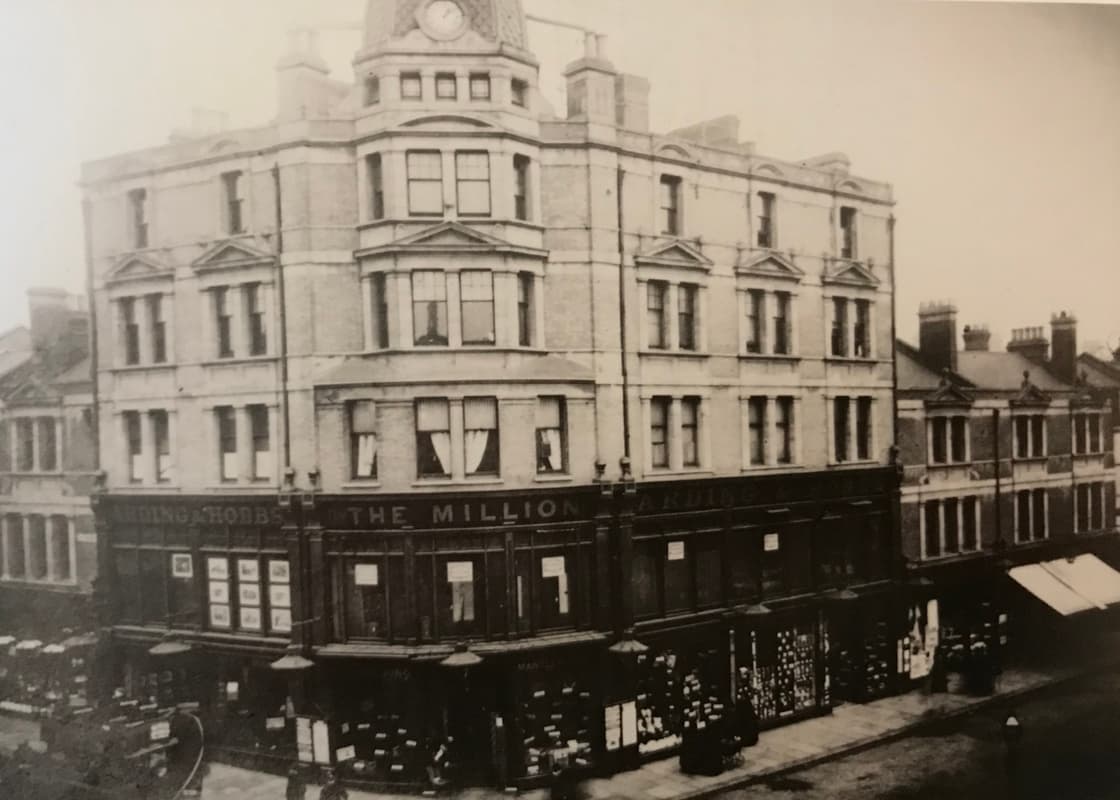
Arding and Hobbs 1890
The largest by far was Arding and Hobbs. The business started in Wandsworth, but opened on the corner of St John’s Road and Lavender Hill in 1884. The building was extended several times before it was destroyed by fire on 20 December 1909. The heat was so intense it roasted the turkeys on display outside Francis and Sons, the grocers on the opposite corner. The new, much larger store, dominated by its lantern tower on the corner, opened for business by Christmas 2010. With later additions, it included a post office, restaurant and grocery shop. It ceased to be owned by the Arding family in 1938, and went through a succession of owners before passing to the Debenham Group, with part of the building leased to TK Maxx.

The major changes over the past 40 years have been the development of first the small shopping centre and offices for the PCS union in the long-derelict area between the Falcon pub and the station; and second, the Asda and Lidl supermarkets, along with Boots the chemist, on the former Falcon Lane Goods Depot north of Lavender Hill. Both are likely to see further redevelopment in the future. And in the meantime, the nature of the shopping streets around Clapham Junction, as across the UK, has been changing dramatically.

Northcote Road circa 1925
In the 1980s, for example, Northcote Road was characterised by small outlets of some of the national multiple stores, others of which – including Woolworths and Marks and Spencer - had earlier built larger stores on St John’s Road. More recently, Northcote Road has seen the arrival of a range of shops for baby and children’s clothes, cafés, and the rise of a boutique culture; while Battersea Rise is now dominated not by shops, but by cafés, restaurants and bars catering to the night time economy.
PUBLIC BUILDINGS AND ENTERTAINMENT
By 1900, Clapham Junction had become the municipal and entertainment centre of Battersea. A reformed Battersea Vestry was established in 1887 and set up its headquarters at 68a Battersea Rise (now Fresh Ground). It worked closely with the newly-created London County Council, where the charismatic John Burns was the Battersea representative from 1889 (he was also MP for Battersea from 1892 to 1918). The Vestry, and Battersea Borough Council which replaced it in 1900, oversaw the building of Lavender Hill Library in 1888 and Battersea Town Hall (now Battersea Arts Centre) in 1893. Both were designed by Edward Mountford, who lived locally and had earlier designed the Baptist Church in Northcote Road. His most famous building is the Central Criminal Court at the Old Bailey.
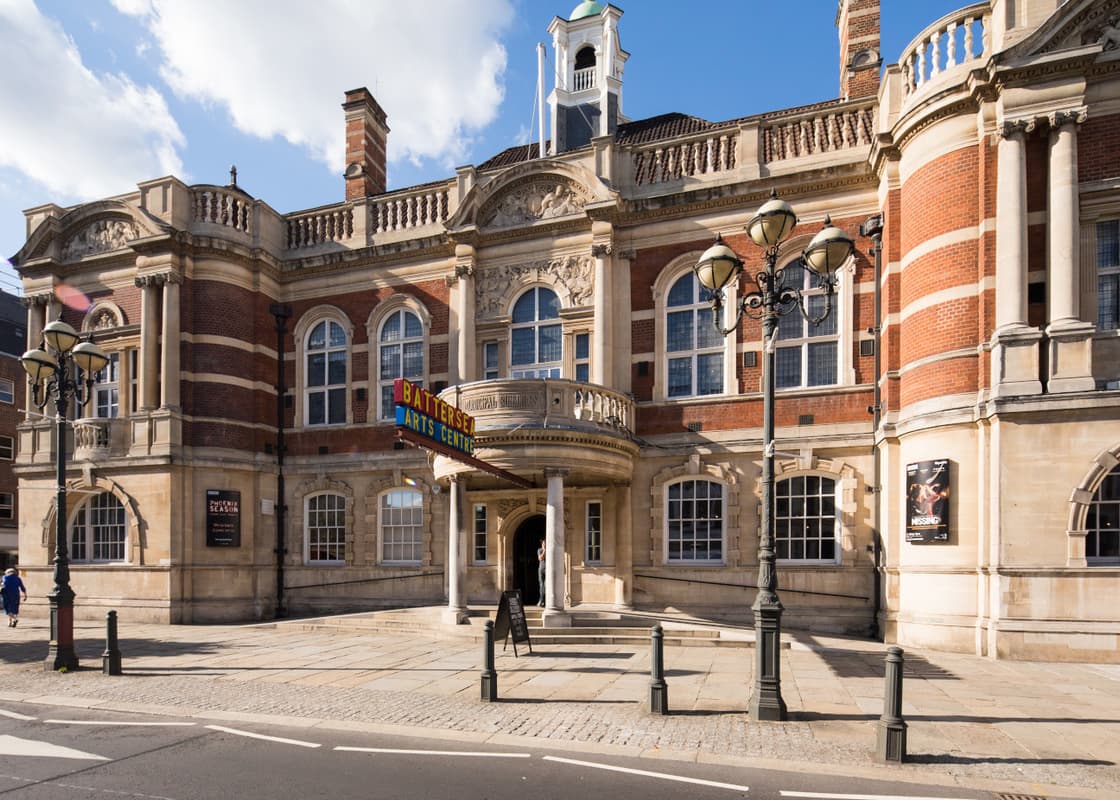
The South-Western Police Court opened in 1892 on the corner of Lavender Hill and Kathleen Road, and was followed three years later by the police station on the corner of Latchmere Road. The court closed in 1939 on the eve of the Second World War, but the police station remained open until it was demolished in 1962. The new combined magistrates court and police station was opened in 1963.
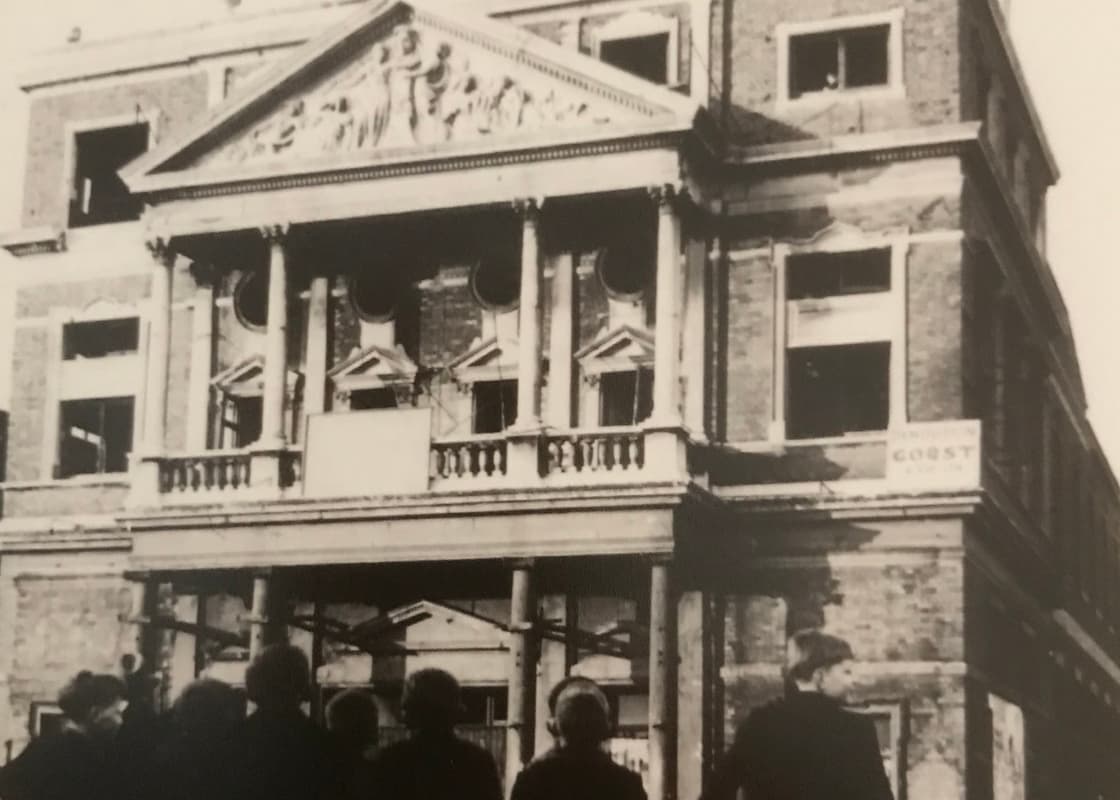
Shakespeare Theatre 1956
For entertainment, the 1200-seat Shakespeare Theatre was opened in 1896, next to the Town Hall on the corner of Lavender Hill and Theatre Street. It became a cinema in 1930, and after bomb damage in 1940, it was finally demolished in 1957. The first music hall, the Grand Hall of Varieties, opened in 1894, behind Munt’s piano shop at the foot of St John’s Hill. It was converted into a cinema as early as 1913, operating under various names before it closed in 1981, to be replaced by Barclays Bank. Other cinemas included the Junction Picture House, on Lavender Hill; the Biograph on St John’s Road; the Lavender Hill Picture House; the Pavilion, also on Lavender Hill; the Globe on Northcote Road; and the Granada on the corner of Plough Road. Only the last of these survives, as a church for the Deeper Christian Life Ministry, with flats above it.

The sole survivor of the late Victorian entertainment venues is the Grand, opened in 1900 as the New Grand, the successor to the Grand Hall of Varieties. It housed all kinds of live performances, most famously by Dan Leno, until the 1940s, when it became yet another cinema, then a bingo hall. It was empty in the 1980s, before re-opening as a music venue, with much of the opulent interior restored. Since 1998 it has operated as a night club, an emblematic example of how the cinemas and theatres that used to provide entertainment at Clapham Junction have been renewed – or more often replaced - to provide for the many different forms of the 21st century night-time economy.

